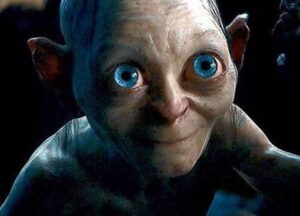
Part Two of World Fantasy Con 2022, and a few thoughts from a great panel that I was one of the speakers of – Just Who is the Villain? A deep dive into looking at the good, the bad, and everything between. Who doesn’t love morally grey villains that strike that uncomfortable chord?
As writers we’re always looking to access alternative points of view to create well-rounded characters. Perhaps in deciding villain types, there are the questions: how do you want to hook your readers & what are you looking to evoke?

I’m currently working on Book 3 of my fantasy series, Blood Gift Chronicles, and throughout the books I play with various forms of good and bad. One of the things I thought about when I was starting out, was the idea that anyone could turn bad under the right conditions. The corruption of peace-loving hobbits. The Harvey Dent effect in Batman – good guy turns bad. Although it would be great to do away with facial disfigurement relating to villains. I think the idea of potentially seeing ourselves framed as the villain is powerful and uncomfortable and evokes a reaction.
So as the series starts out it appears like a good versus bad scenario. Resistance versus fascism. And there’s levels of bad: a society that exploits nature for wealth to disastrous effect, the exploitation of women and children and the impacts of it, corruption motivated by wealth and power, or to keep favour with those in power – neighbours willing to shop their own neighbours. And at the head of it, it appears to be a form of innate evil. Although in reality, the King was corrupted by the supernatural. Or was he? It’s a mystery that unfolds throughout the series. In the beginning I considered doing a kind of origin story for him, but opted instead to explore what might have happened to him through another character, who is innocent, and we care about, so potential corruption comes with higher stakes. Ultimately this is a world where many worlds fit and as the series progresses, new lands are introduced, so we start to see broader perspectives which then brings everything into question. Which in itself brings us into what feels like a morally grey arena. I found it interesting to blend the political, social, and human endeavour, with the supernatural and fantastical, and ultimately break through the binary of good versus evil.
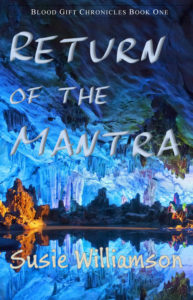

There are so many great representations of good and bad, and alternate ways to portray: from the binaried hero versus villain to everything on the spectrum, anti-heroes, antagonists… Good and bad are perspectives, and then there are what motivates. The idea of innate evil can be interesting in what it allows in its reflection – the Nightwalkers in Game of Thrones bring the epitome of fear, a binary that allows space for the epic scene when Arya destroys the Night King – says everything we need to know about her! Fanaticism driven by ideology can pack a punch. I always thought Magneto made for an interesting villain, with a backstory showing the origin of his powers as a mutant, as well as being a victim of fascism, makes him relatable. In a way he turned into the thing he feared most. But at the same time, his cause isn’t completely dissimilar to Xavier’s, just the execution of it. Then comes the truly nuanced antagonists. N.K. Jemison’s The Fifth Season, with the character, Essen – a 42-year-old woman whose son is murdered and daughter is kidnapped, and she will tear the world apart to find her daughter. She’s emotionally closed off and will kill anyone who gets in her way. Yet her cause is one we can relate to.
A personal current favourite is Killmonger in Black Panther. While Klaue and W’Kabi are the obvious villains, Killmonger stands out for his human qualities fighting for what could be seen as a just cause. An enemy to Wakanda with its isolationist policies as they stand, he wants to use vibranium to empower Africans around the world, and this on his own back story losing his father as a child. Although he dies an enemy of Wakanda, King T’Challa ends up honouring his legacy in part. Partly because he feels a level of responsibility – he describes Killmonger as ‘a monster of our own making,’ – and partly because he simply thinks it’s the right thing to do. Villains imparting morality on heroes. Not to mention some fabulous good guys – techno wizard, Shuri, and the Dora Milaje all women protection squad – just awesome.
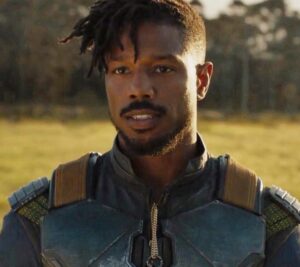
There’s also a lot to be said for non-human characters, deliberately created far removed from the human experience, yet from a safe distance, inspect the human condition. The architect in The Matrix: a highly intelligent mastermind totally devoid of emotion, would be willing to annihilate the human race if need be, all under a precise calculation. Which course of action to take depends on perspective. Alien invasions analogous to the othering of humans: Invasion of the Body Snatchers, a communist metaphor – so good and bad judgements being made on actual world events. Aliens as machines. Vikki, the central machine in I, Robot. An ultimate enemy to the human race, yet working by the three laws created by humans, with a logic that could be seen as logical. I, Robot itself learning human traits and choosing them, as with the Terminator, and those human traits are seen to be the right/good choice. Then the recent film, Extinction, which challenges racism, prejudice, and othering, highlighting perspective, and subverting expectation, messing around with who is hero and who is villain. Like I said, good and bad are perspectives, and then there’s motivation.
Book recommendations to follow. Until next time…

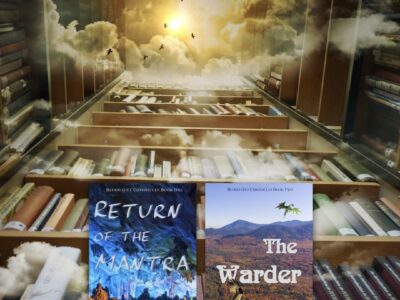



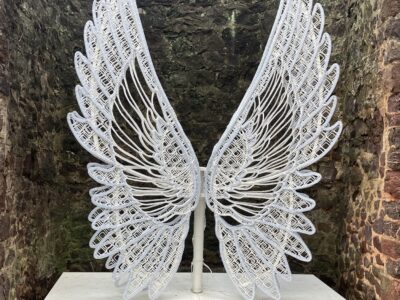
2 comments for “Breaking Binaries of Good v Bad in SFF”